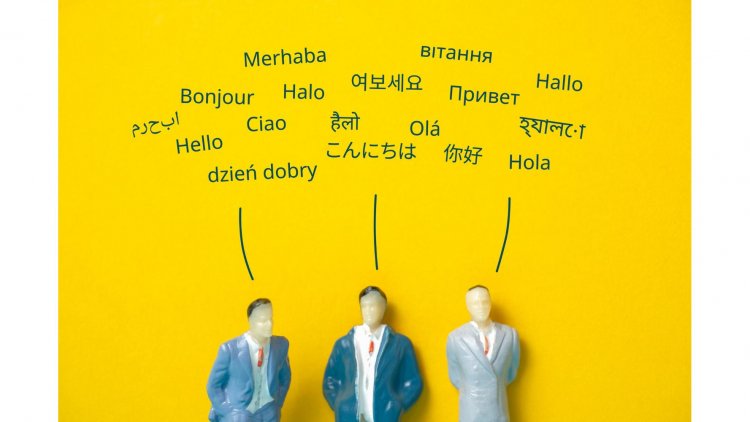Breaking the Language Barrier
Traveling to a new country can be one of the most exhilarating experiences of a lifetime. Yet, among the many adventures and discoveries that await, one challenge that often stirs up anxiety is the language barrier. Imagine navigating bustling markets, seeking directions, or trying to order a meal, only to be met with blank stares and misunderstandings. Language differences can turn a simple interaction into a frustrating ordeal, but fear not. With the right strategies and tools, you can turn this potential pitfall into an opportunity for cultural immersion and personal growth.

Here are eight indispensable travel tips to help you overcome language barriers and make your journey smoother and more enjoyable.
1. Learn Basic Phrases Before You Go
Even if you’re not fluent, learning a few key phrases in the local language can go a long way. Start with essentials like greetings, thank you, please, and asking for help. These phrases not only help you in everyday interactions but also show respect for the local culture.
Tip: Use language learning apps like Duolingo or Babbel to practice before your trip. Flashcards can also be effective for memorizing key terms. If you’re unsure about pronunciation, listening to native speakers or using pronunciation guides can help you get it right.
2. Leverage Technology with Translation Apps
In today’s digital age, smartphones are powerful tools for overcoming language barriers. Translation apps can be lifesavers, translating text, speech, and even images. Popular apps like Google Translate and iTranslate are versatile and widely used.
Tip: Download offline language packs before your trip to ensure you have access to translations even when you’re out of range. While these apps are handy, remember they may not always be perfect—context and nuance can sometimes be lost.
3. Carry a Pocket Dictionary
A pocket-sized dictionary or phrasebook can be incredibly useful, especially in areas with limited internet connectivity. Look for travel-specific dictionaries that include essential phrases and cultural tips.
Tip: Choose a dictionary with phonetic guides to help with pronunciation. Some phrasebooks also provide useful cultural notes and etiquette tips, which can be beneficial when navigating social interactions.
4. Use Visual Aids
When words fail, visuals can bridge the gap. Carrying a small notepad and pen allows you to draw or write things down. This can be especially helpful in restaurants or markets where you might want to point to an item or write down specific requests.
Tip: Pre-load images on your phone that represent common needs or requests, such as food allergies, directions, or medical emergencies. Showing these images can often be more effective than trying to explain in broken language.
5. Engage with Locals
Engaging with locals not only helps you practice the language but also provides insights into cultural norms and practices. Locals appreciate when travelers make an effort to communicate in their language, even if it’s just a basic attempt.
Tip: Start conversations with a friendly smile and use simple phrases. Don’t be afraid to ask for help if you’re struggling with the language. Most people will appreciate your effort and be willing to assist.
6. Join Language Exchange Meetups
Many cities host language exchange meetups where locals and travelers come together to practice different languages. These gatherings can be a fun way to improve your language skills and meet new people.
Tip: Check social media platforms or local community boards for information about these events. Websites like Meetup.com can also be useful for finding language exchange opportunities in various destinations.
7. Use Gestures and Body Language
Non-verbal communication is a universal language that can help you get your message across. Use gestures, facial expressions, and body language to complement your verbal attempts. This can be particularly useful in situations where language barriers are significant.
Tip: Be mindful of cultural differences in gestures, as some may have different meanings in various cultures. For example, the thumbs-up gesture may be interpreted differently in different countries.
8. Be Patient and Stay Positive
Misunderstandings are a natural part of communication when there’s a language barrier. Approach these situations with patience and a positive attitude. Your willingness to remain calm and understanding will make interactions smoother and more enjoyable.
Tip: If you encounter a communication breakdown, try to remain composed and seek alternative ways to convey your message. Sometimes, simply being polite and maintaining a friendly demeanor can help resolve misunderstandings.
Navigating language barriers while traveling doesn’t have to be a daunting task. By preparing in advance, utilizing modern technology, and engaging with locals, you can make the most of your travels and enrich your experience. Embrace the challenge with an open mind and a willingness to learn, and you'll find that language differences can lead to meaningful interactions and unforgettable experiences.
Disclaimer: The travel information and recommendations on this blog are intended for general guidance and inspiration. Conditions and regulations can change quickly, so please verify all details with appropriate sources before making travel plans. We are not liable for any errors, omissions, or outcomes resulting from your use of this information. Travel involves inherent risks, and it's essential to prioritize your safety and well-being. Always travel with adequate insurance and take necessary precautions.
What's Your Reaction?





















